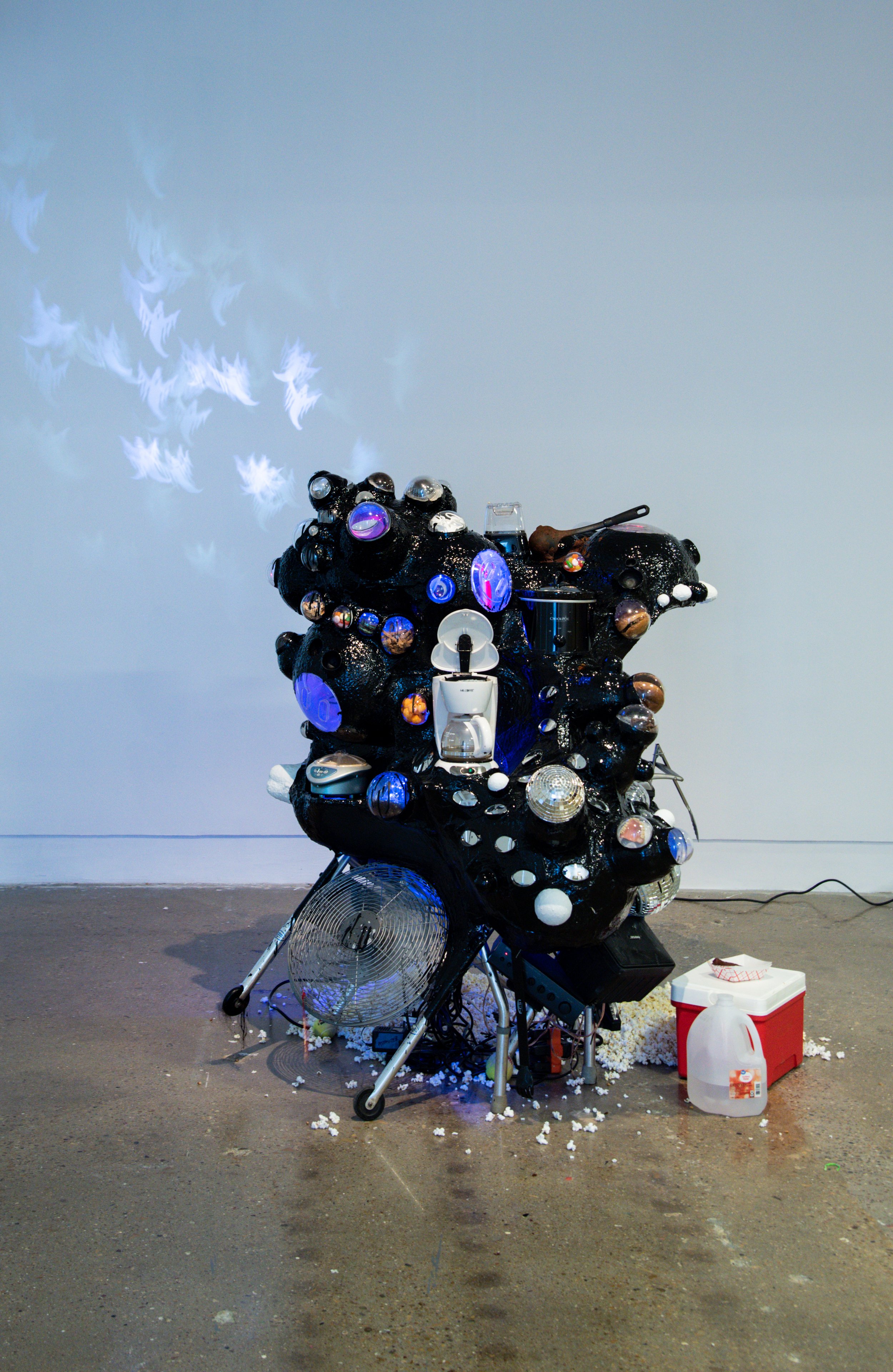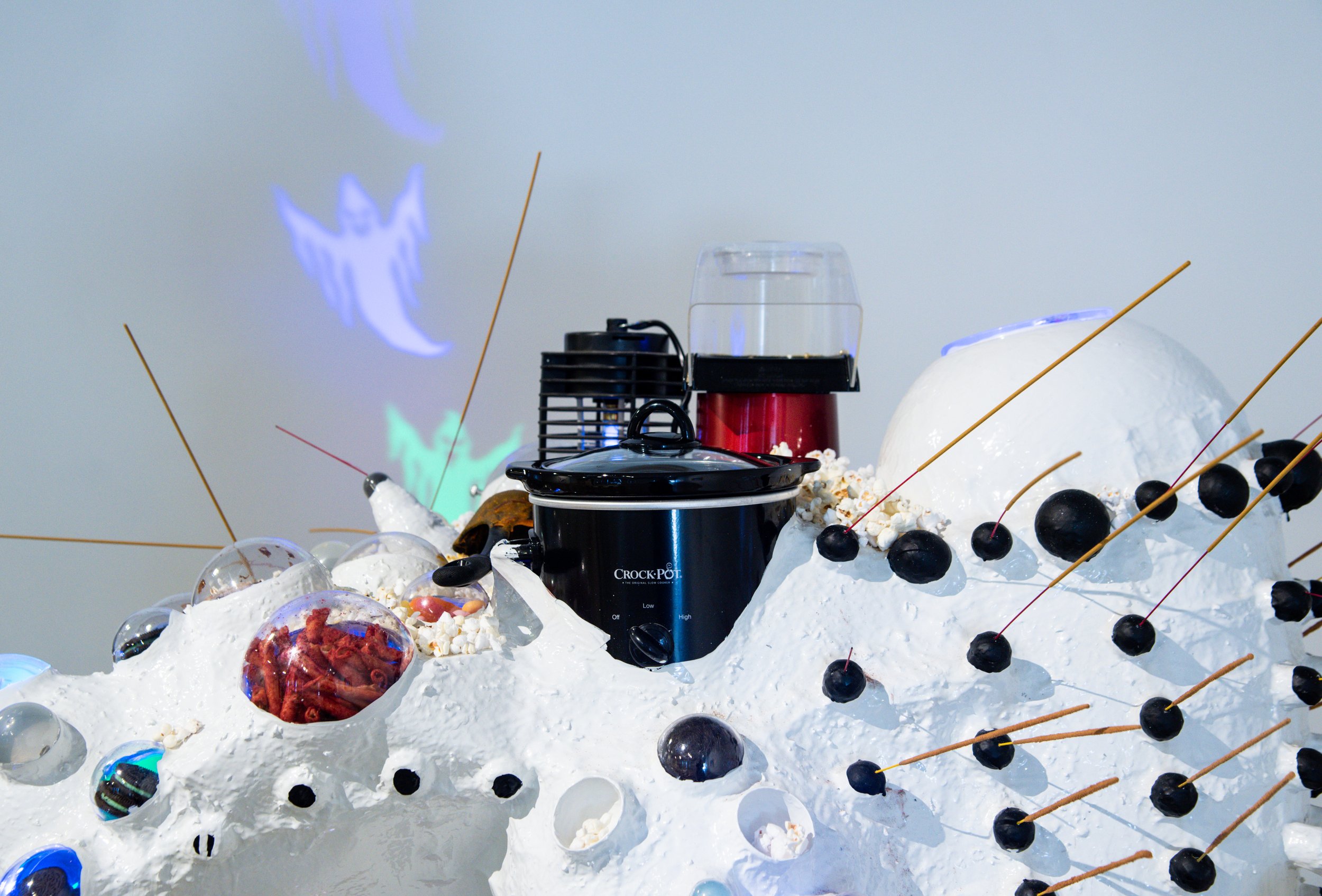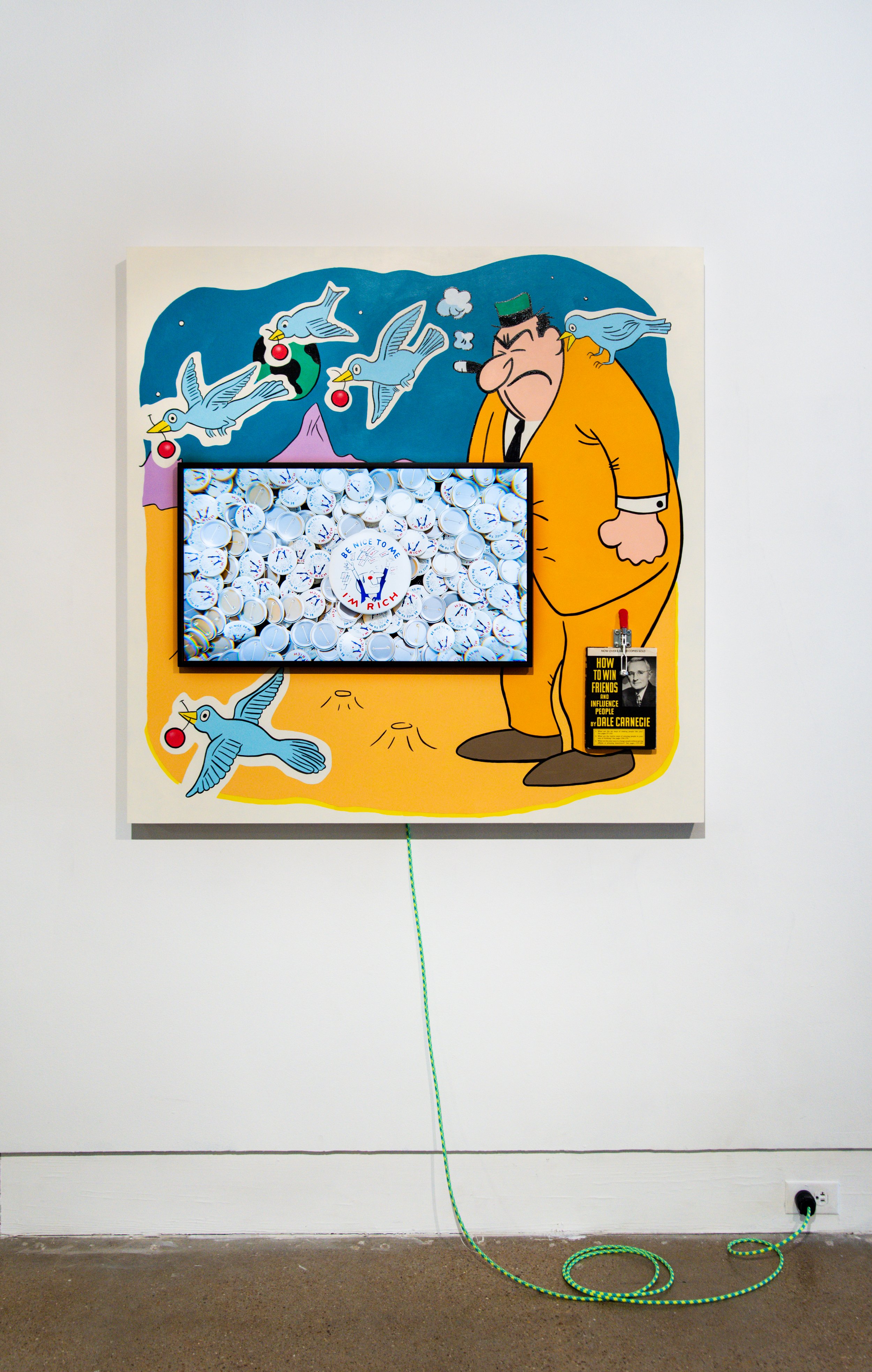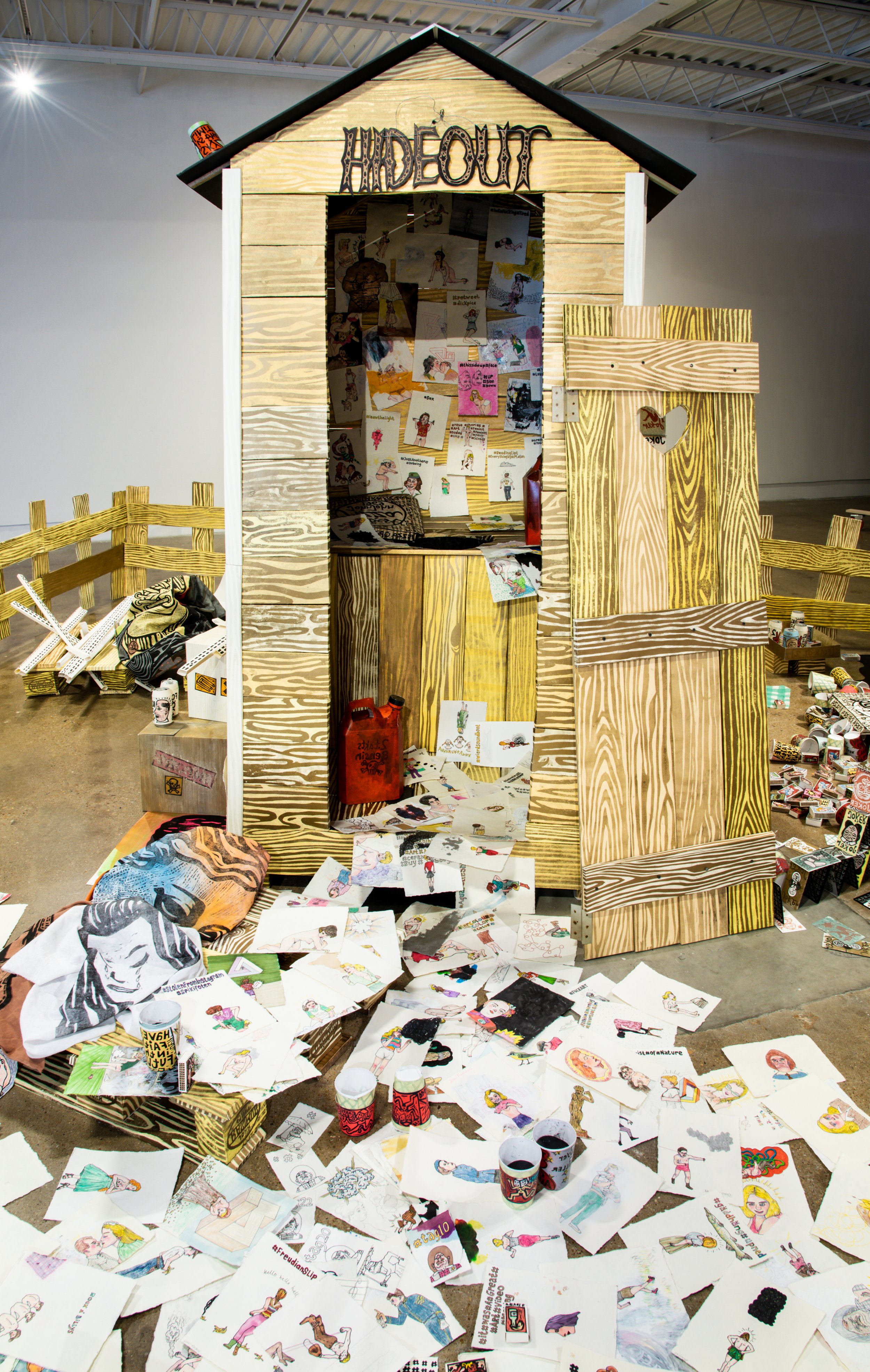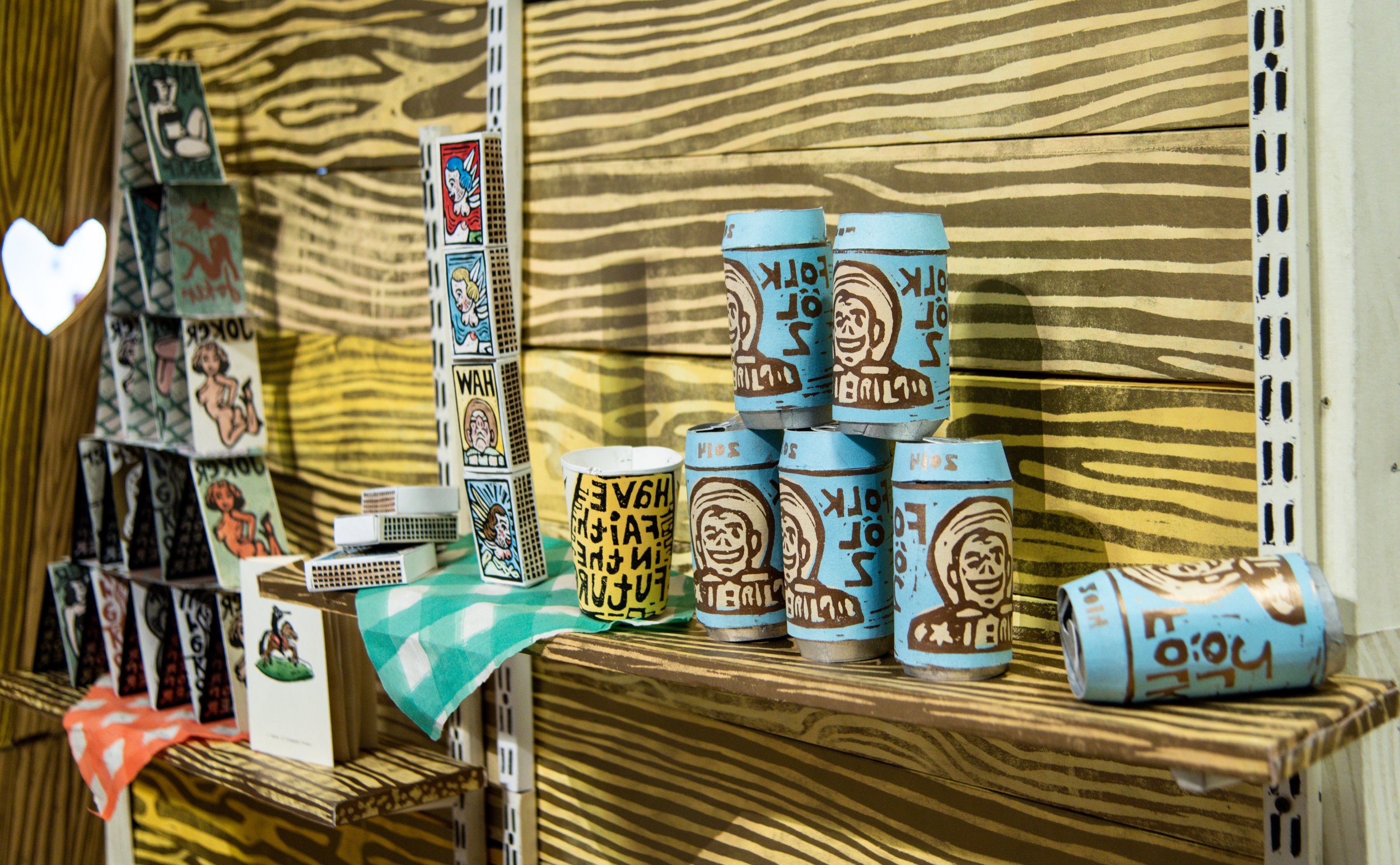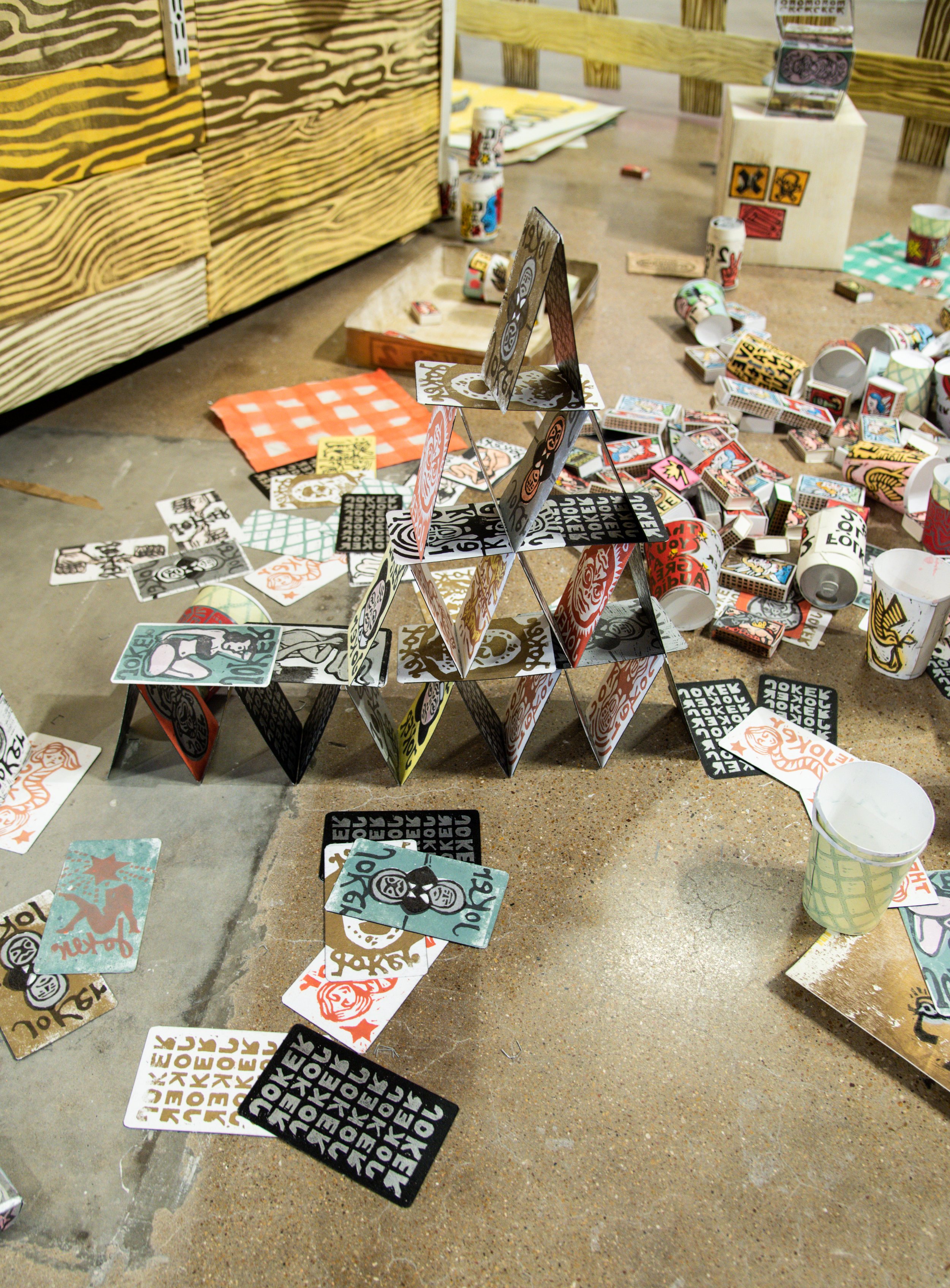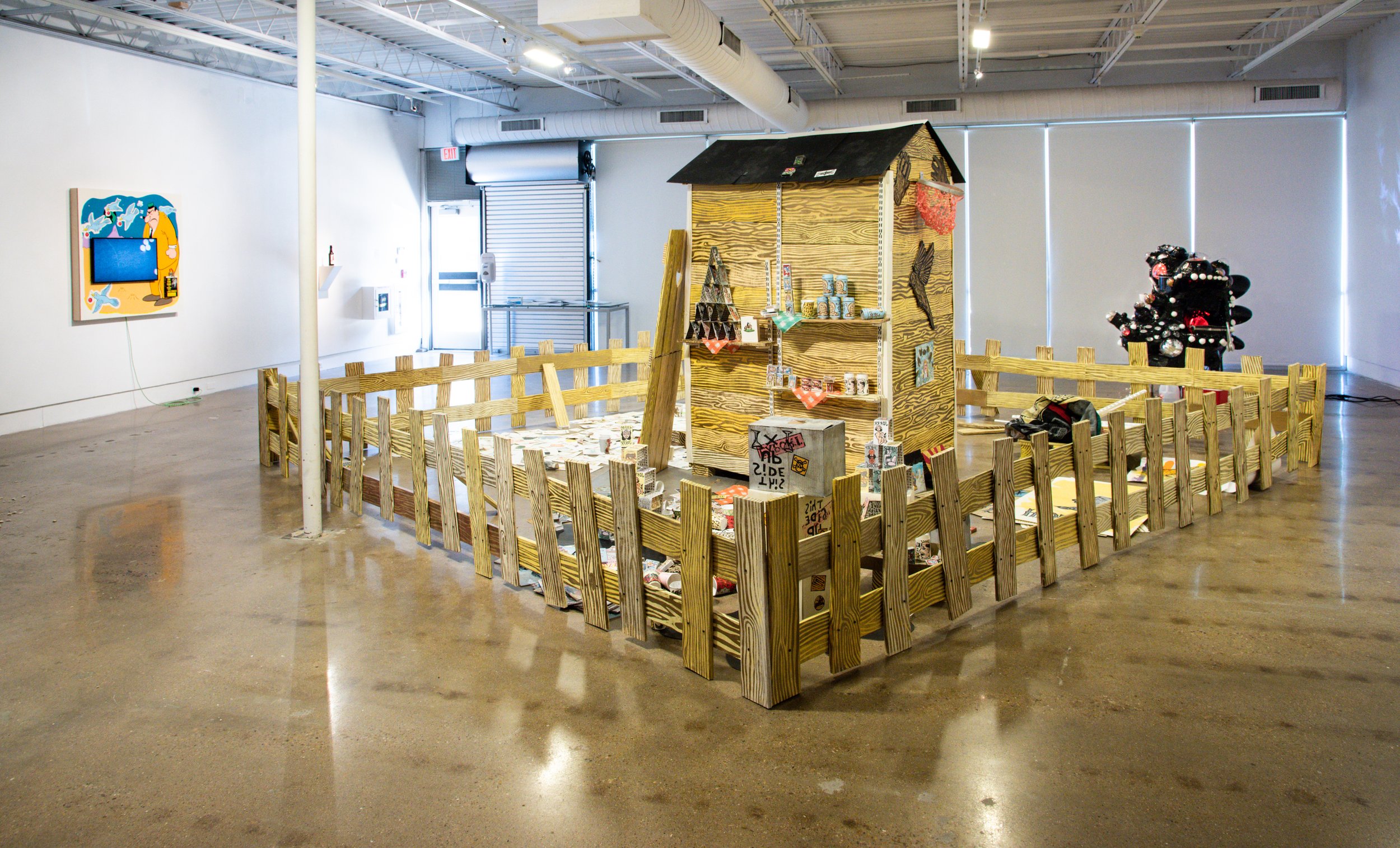Persona: Richie Budd, Kris Pierce & John Rasimus
February 25 – April 30, 2022
The artists describe Persona as loosely referencing Ingmar Bergman’s 1966 Swedish film of the same title; an experimental, psychological drama renowned for its perplexing suggestion that the two main characters experience a type of an emotional convergence. Formatted as three concurrent solo exhibitions, the artists’ work circled ideas relating to identity, duality, and character as traits of humans’ inherent need to distinguish and validate their existence as individuals.
Through these individual presentations, the artists considered the development of persona in real and digital space, including involvement of physical senses. In different ways they each spoke to a complicated desire to exist at the center of one’s own universe. Working within an anti-collaborative format, a web of connections between the artists’ approaches was revealed without the dynamics of a traditional group exhibition or the type of social alliance that informs much contemporary media.
In his exhibition Dead Souls, Richie Budd presented new biomorphic sculptures that suggest meaning through shape and sensation. The forms included multi-sensory devices such as Halloween ghost projectors, sound components, fans that distribute the smell of essential oils, popcorn makers popping, and George Foreman Grills that allowed the artist to cook hotdogs. Through these sculptures Budd hoped to entice an affective encounter for gallery visitors that would cultivate their future memories.
Kris Pierce’s new multimedia works in his exhibition Oil Can Tremolo explored virtual identity through a real-time gathering of sources from social media platforms. Concerned with how we project and perceive our own reality, Pierce reflected on the trend of main character syndrome; a TikTok phenomenon where people imagine and act out scenarios playing the “main character” in a fictionalized version of their lives. His work asks us to consider how aspects of self-assurance, confidence are understood in American culture, and how technology has the potential to transform healthy individualism into a type of harmful narcissism.
Swedish artist John Rasimus uses drawing, print and animation to create ambitious large-scale installations that playfully challenge media characteristics and rest on illusion. For his exhibition Hideout, Rasimus presented a life-size wooden “outhouse” created from folded paper prints made to suggest the look of real wooden planks. Cartoonish and absurd, the lone structure presented itself as a delicate shelter and personal space for the most intimate activities. Employing a style characterized by bold outlines, bright colors and references to cowboys and other signifiers of Western culture, Rasimus’ work is a dynamic, comedic mash up of Swedish wit and Texan honky tonk aesthetic.
Installation images by Lynné Bowman Cravens



